The first OA-1K light attack aircraft — recently officially named as the Skyraider II — has been delivered to Air Force Special Operations Command (AFSOC). While the command welcomed the militarized derivative of the popular Air Tractor AT-802 crop duster, there remain serious questions about how the Air Force will actually make use of the OA-1K, as the service increasingly prepares for future high-end contingencies.
Air Force Special Operations Command announced today that it had officially received a first missionized OA-1K at Hurlburt Field, Florida. The handover ceremony was attended by Special Operations Command representatives, AFSOC leadership, elected officials, and community leaders. Also in attendance was retired Lt. Col. Bill Buice, an A-1 Skyraider pilot and Vietnam War veteran. In this previous story, you can read how the name of the original Skyraider was passed over to the OA-1K.
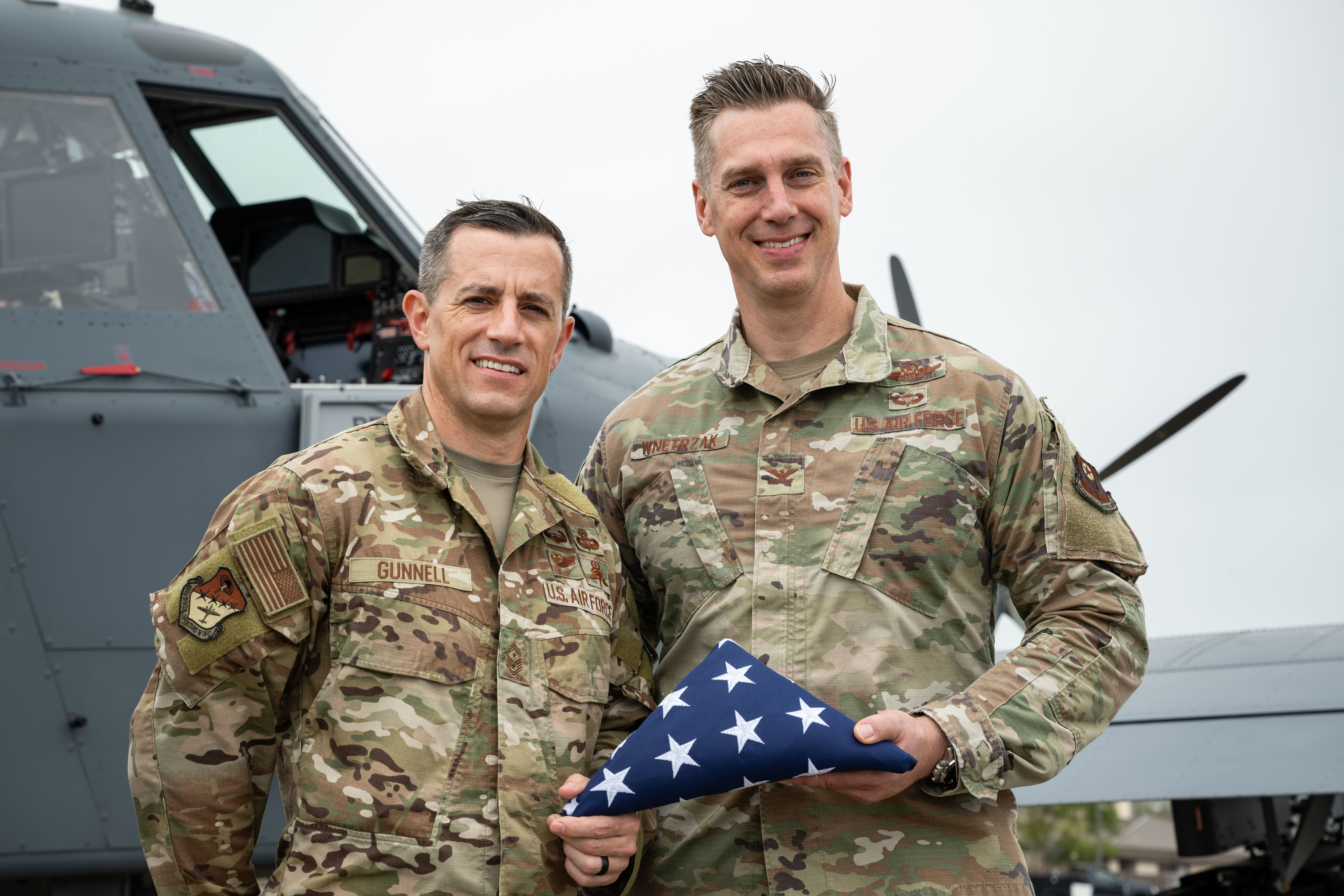 U.S. Air Force Chief Master Sgt. Thomas Gunnell, left, 492nd Special Operations Wing command chief, and U.S. Air Force Col. Patrick Wnetrzak, right, 492nd SOW commander, pose for a photo holding an American flag that was presented to the 492nd SOW leadership team to signify the handover of the OA-1K at Hurlburt Field, Florida, on April 3, 2025. U.S. Air Force photo by Staff Sgt. Natalie Fiorilli Staff Sgt. Natalie Fiorilli
U.S. Air Force Chief Master Sgt. Thomas Gunnell, left, 492nd Special Operations Wing command chief, and U.S. Air Force Col. Patrick Wnetrzak, right, 492nd SOW commander, pose for a photo holding an American flag that was presented to the 492nd SOW leadership team to signify the handover of the OA-1K at Hurlburt Field, Florida, on April 3, 2025. U.S. Air Force photo by Staff Sgt. Natalie Fiorilli Staff Sgt. Natalie FiorilliAs we have discussed in the past, the two-seat, turboprop-powered OA-1K can carry up to 6,000 pounds of munitions and other stores, including precision-guided missiles and bombs and podded sensor systems, on up to eight underwing pylons. According to the manufacturer, the OA-1K can fly out to an area up to 200 miles away and loiter there for up to six hours with a typical combat load. Once there, it can conduct its mission aided by a “robust suite of radios and datalinks providing multiple means for line-of-sight (LOS) and beyond line-of-sight (BLOS) communications.”
In a media release, AFSOC described today’s delivery as marking “the start of a new era in aircraft modularity.” The command noted that the OA-1K “can adapt capabilities for required mission sets, be it close air support, precision strike, or armed intelligence, surveillance, and reconnaissance. Its flexibility ensures AFSOC can meet the needs set forth by the Secretary of Defense and the President.”
“Skyraider II represents not just a new platform, but a modular solution to our national security needs,” added Lt. Gen. Michael Conley, AFSOC commander, speaking at the ceremony today. “It will redefine how we approach joint campaigning, crisis response, and the evolving landscape of modern warfare.”
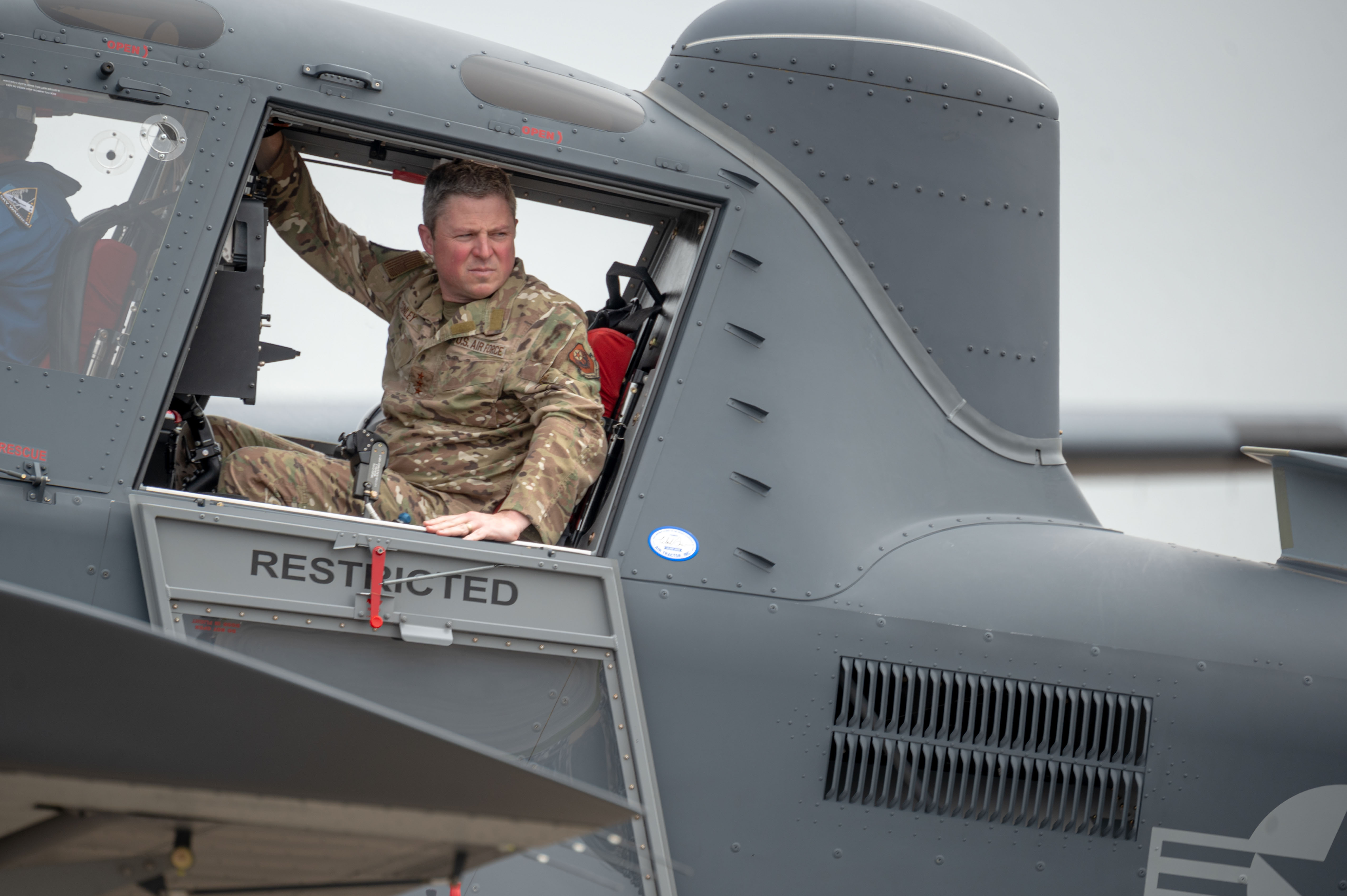 U.S. Air Force Lt. Gen. Michael Conley, Air Force Special Operations Command commander, steps from the OA-1K as part of a delivery ceremony at Hurlburt Field, Florida, on April 3, 2025. U.S. Air Force photo by Staff Sgt. Natalie Fiorilli Staff Sgt. Natalie Fiorilli
U.S. Air Force Lt. Gen. Michael Conley, Air Force Special Operations Command commander, steps from the OA-1K as part of a delivery ceremony at Hurlburt Field, Florida, on April 3, 2025. U.S. Air Force photo by Staff Sgt. Natalie Fiorilli Staff Sgt. Natalie FiorilliAFSOC’s release pointed to the fact that the OA-1K is based on a proven aircraft platform, the AT-802, and that it requires a much smaller maintenance package and provides lower operating costs than other conventional or special operations aircraft.
The command also made efforts to stress the relevance of the OA-1K in missions other than counterinsurgency and other low-intensity warfare scenarios for which it was originally envisaged.
“The Skyraider II is a dynamic aircraft that will allow operators to adjust effects quickly for required missions and create dilemmas for our adversaries across the spectrum of armed conflict,” the command said. “The Skyraider II aims at delivering options in a new era of strategic competition, which requires adaptiveness,” it added.
While it’s not exactly clear how the OA-1K will be used for a broader range of missions “across the spectrum of armed conflict,” there’s no doubt that the utility of the aircraft is already being discussed at the highest levels.
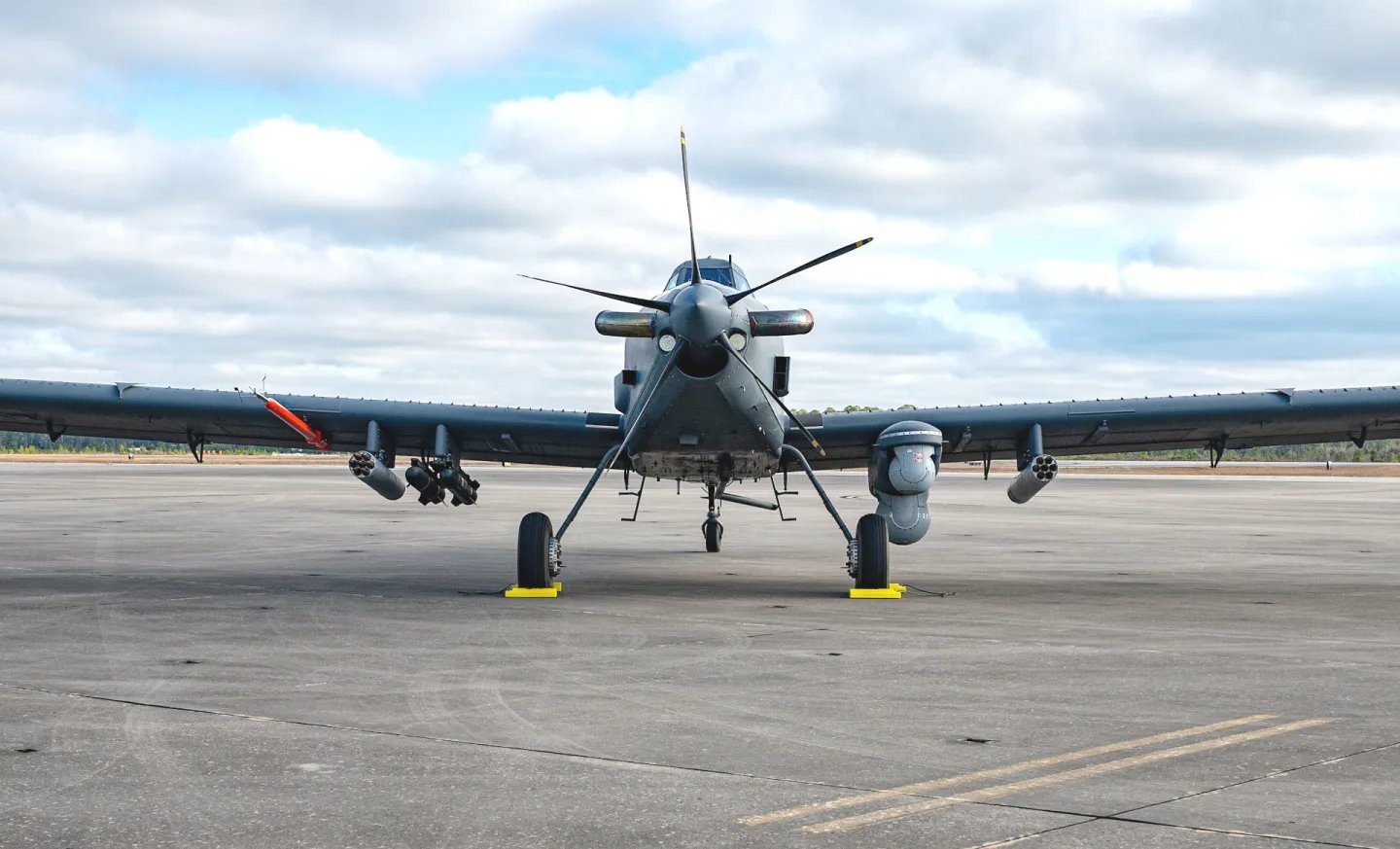 A head-on view of the OA-1K Skyraider II. U.S. Air Force
A head-on view of the OA-1K Skyraider II. U.S. Air ForceThe OA-1K was discussed specifically today before the Senate Armed Services Committee, which included Army Gen. Christopher G. Cavoli, commander of U.S. European Command and Supreme Allied Commander Europe, and Marine Corps Gen. Michael E. Langley, commander of U.S. Africa Command.
Addressing Gen. Langley, Senator Mark Kelly of Arizona identified what he said was a “close air support gap” in the AFRICOM area of responsibility, amid an uptick in activities by violent extremist organizations.
“As our focus continues towards large-scale combat operations in INDOPACOM and in Europe, I’m concerned that our defense modernization and optimization will trend towards those theaters, but away from other issues that we can’t ignore [including] the real threat of terrorism and gray-zone operations, especially in Africa,” Kelly said.
Kelly then asked Gen. Langley whether the OA-1K could fill a particular armed intelligence, surveillance, and reconnaissance (ISR) requirement for AFRICOM.
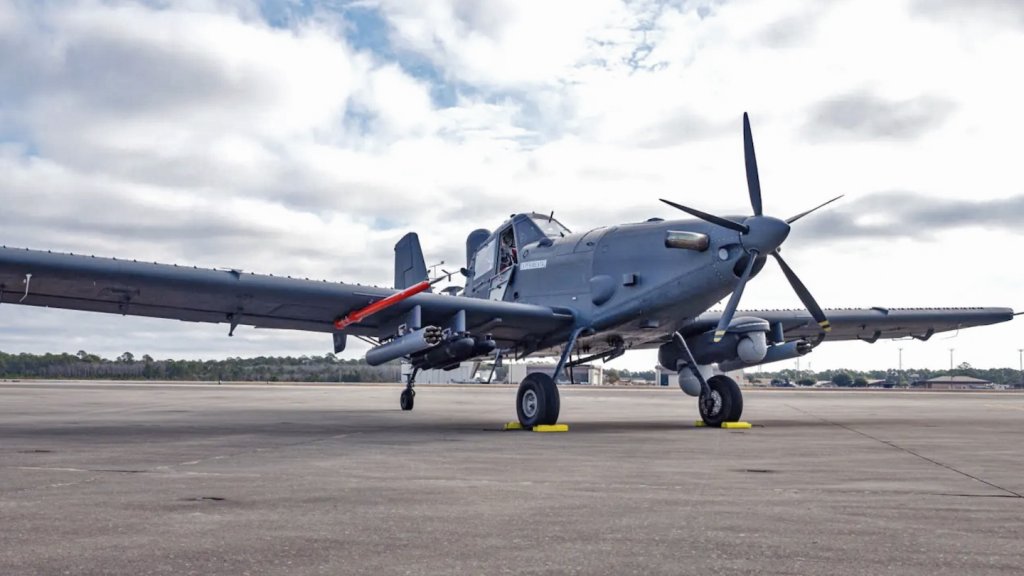 Another view of the OA-1K Skyraider II. U.S. Air Force U.S. Air Force
Another view of the OA-1K Skyraider II. U.S. Air Force U.S. Air Force“Every combat commander needs more ISR in support of our operations,” Langley said. “I would take any additional ISR and any enhanced technologies that would add to the credibility and the lethality of our forces.”
Questions about the viability of an armed ISR platform in the class of the OA-1K are by no means new. Indeed, they have accompanied the development of this aircraft as well as various progenitors.
This long-drawn-out process involved roughly two decades of mainly abortive light attack aircraft projects under different names, as well as combat experiments conducted across the U.S. military, in particular in the course of operations in Iraq and Afghanistan. In the process, the Air Force stepped away from the light attack initiative, and it then fell exclusively within SOCOM, as you can read more about here.
Throughout these years of lower-intensity operations, there was interest in the potential of cheaper alternatives to existing tactical platforms in the U.S. inventory to carry out missions such as close air support, armed overwatch, and ISR support, in permissive airspace. As well as being cheaper, aircraft in this class also promised to have smaller operating footprints, allowing them to be flown in and out of more austere sites closer to operating areas. At the same time, by having low-cost fixed-wing light attack platforms fly these kinds of missions, expensive-to-operate tactical warplanes could be held back for more challenging missions, reducing fatigue on these airframes.
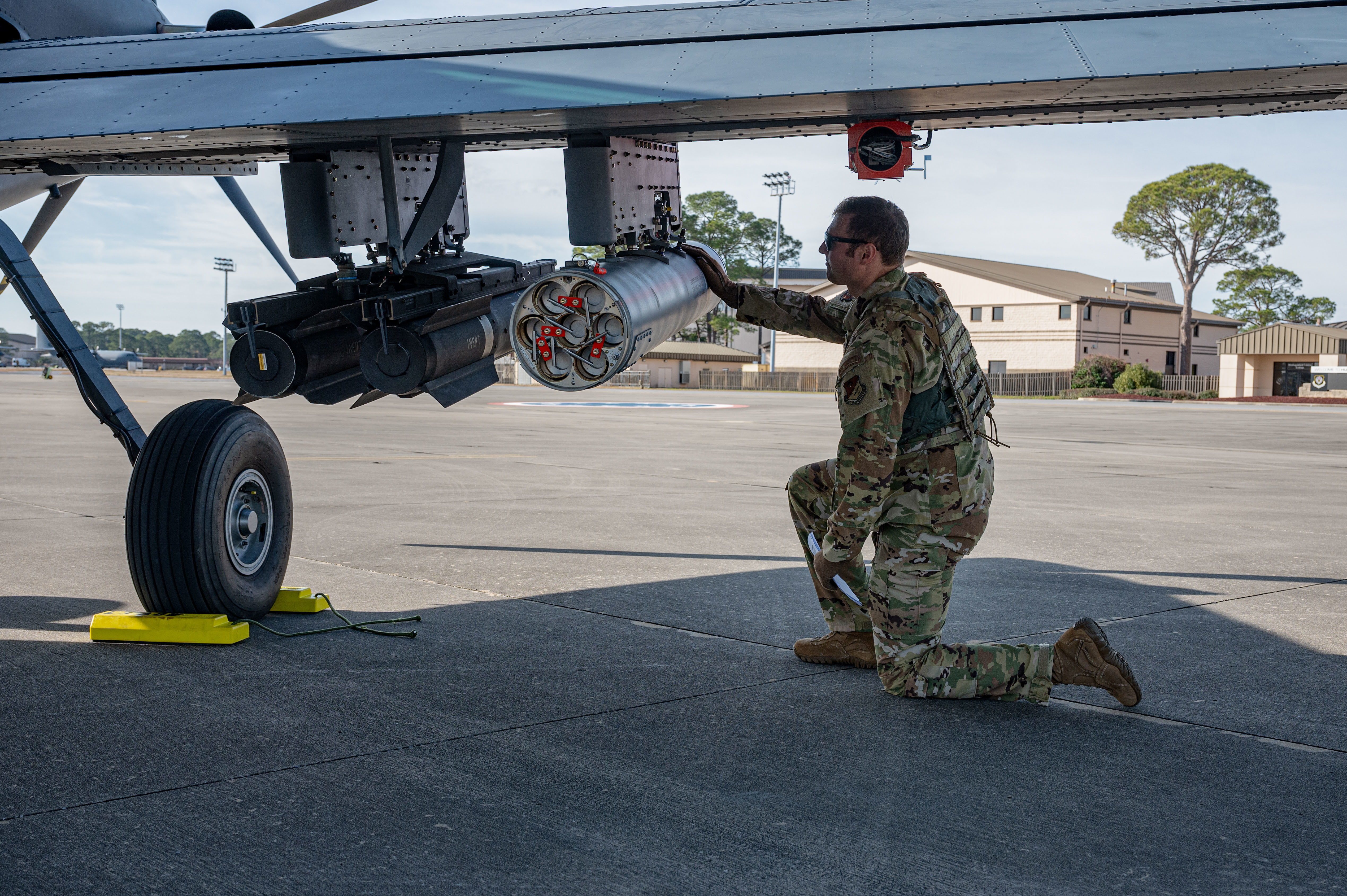 An OA-1K pilot conducts a walkaround on the flightline at Hurlburt Field, Florida, on January 28, 2025. U.S. Air Force photo by Staff Sgt. Natalie Fiorilli Staff Sgt. Natalie Fiorilli
An OA-1K pilot conducts a walkaround on the flightline at Hurlburt Field, Florida, on January 28, 2025. U.S. Air Force photo by Staff Sgt. Natalie Fiorilli Staff Sgt. Natalie FiorilliBy the time of the U.S. withdrawal from Afghanistan, these kinds of concepts were looking far less relevant, although they didn’t disappear altogether: the decision to procure the OA-1K was made after U.S. troops left Afghanistan in 2022.
Since then, the Pentagon has been busy considering how best to prepare for a future high-end fight, especially one fought against China in the Indo-Pacific region. Against this backdrop, the Government Accountability Office (GAO), in a 2023 report, criticized SOCOM since it had “not reevaluated its needs [for the OA-1K] despite changes to operational missions (such as the U.S. withdrawal from Afghanistan) and force structure reductions under consideration.”
Another concern has been SOCOM’s planned withdrawal of special operations U-28A Draco and Beechcraft King Air-based ISR aircraft while introducing the OA-1K. While funds from these divestments will help to procure the new platform, the command admits that the OA-1K will not be a direct replacement for either and that new intelligence-gathering platforms will still be required.
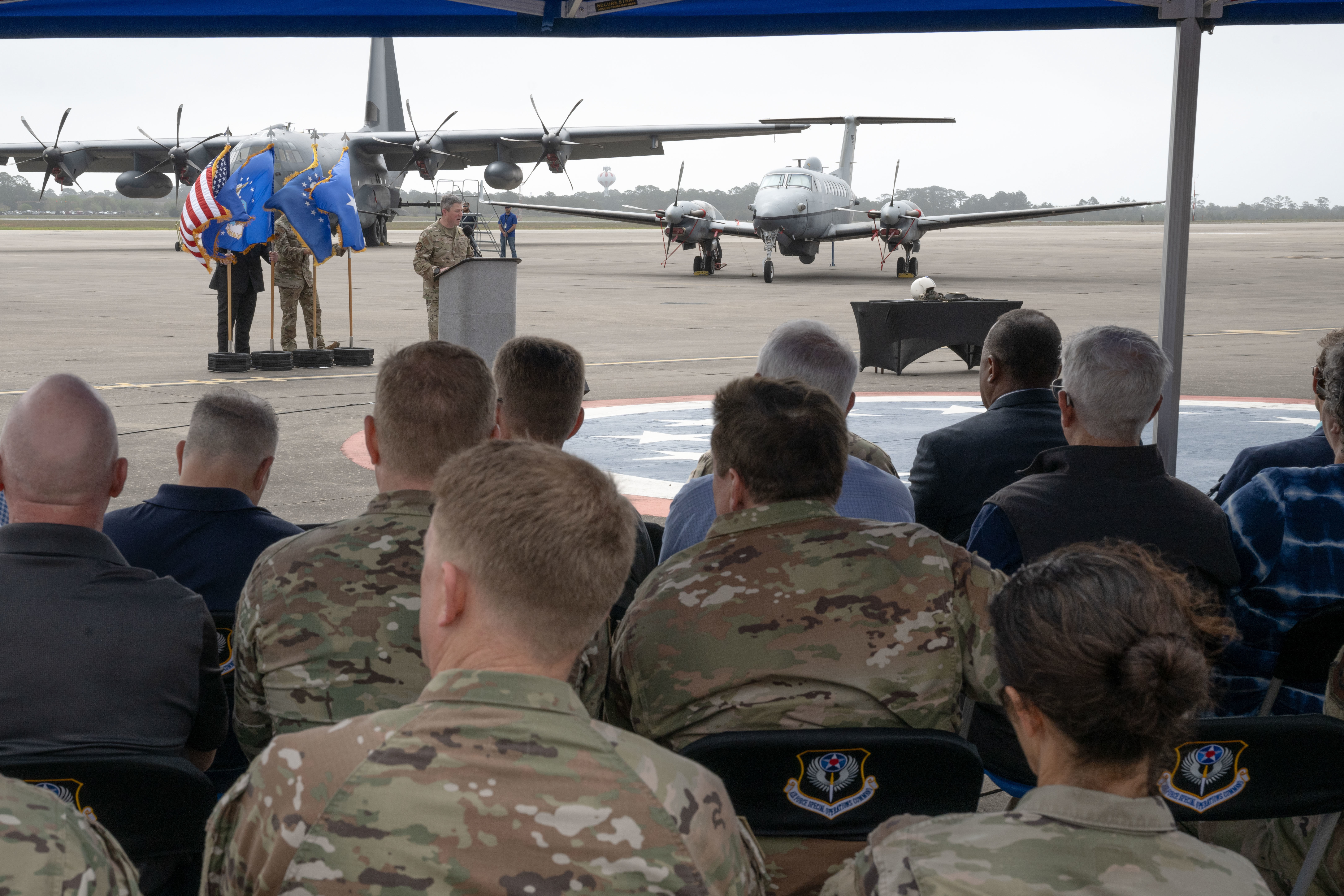 U.S. Air Force Special Operations Command hosts the delivery ceremony at Hurlburt Field, Florida, April 3, 2025, to mark the arrival of the command’s first missionized OA-1K. An AC-130W Stinger II and a Beechcraft King Air-based ISR aircraft are seen in the background. U.S. Air Force photo by Staff Sgt. Natalie Fiorilli Staff Sgt. Natalie Fiorilli
U.S. Air Force Special Operations Command hosts the delivery ceremony at Hurlburt Field, Florida, April 3, 2025, to mark the arrival of the command’s first missionized OA-1K. An AC-130W Stinger II and a Beechcraft King Air-based ISR aircraft are seen in the background. U.S. Air Force photo by Staff Sgt. Natalie Fiorilli Staff Sgt. Natalie FiorilliSome would say this leaves the OA-1K as an aircraft increasingly in search of a role.
Today’s media release from AFSOC would seem to support that, with its vague descriptions of the OA-1K’s potential to be used “across the spectrum of armed conflict.”
When the OA-1K received its Skyraider II name earlier this year, Air Force Brig. Gen. Craig Prather, AFSOC’s director of Strategic Plans, Programs and Requirements, highlighted the aircraft’s potential to “take on missions” along “the southwest border” with Mexico — in addition to operations across Africa. Again, this speaks to the command looking to find relevant missions for its new charge.
At a media roundtable on the sidelines of the Air & Space Forces Association’s main annual conference last September, Lt. Gen. Conley told TWZ last September that some thought was already being given to using the OA-1K for “novel mission sets,” such as signals intelligence or electronic intelligence, although he admitted that this was “not anything we’ve committed to yet.”
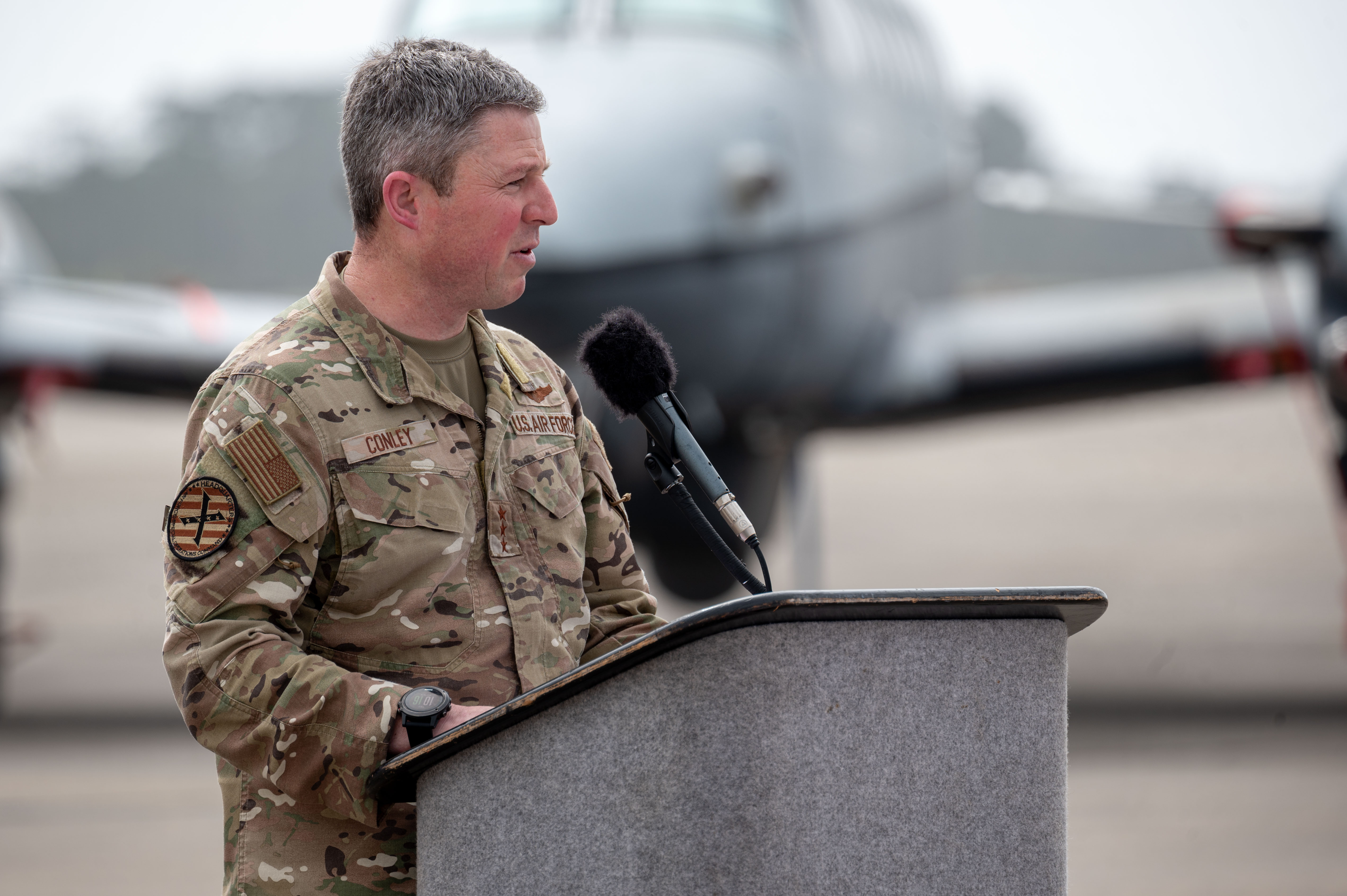 U.S. Air Force Lt. Gen. Michael Conley, Air Force Special Operations Command commander, makes remarks during the delivery ceremony at Hurlburt Field, Florida, on April 3, 2025. U.S. Air Force photo by Staff Sgt. Natalie Fiorilli Staff Sgt. Natalie Fiorilli
U.S. Air Force Lt. Gen. Michael Conley, Air Force Special Operations Command commander, makes remarks during the delivery ceremony at Hurlburt Field, Florida, on April 3, 2025. U.S. Air Force photo by Staff Sgt. Natalie Fiorilli Staff Sgt. Natalie FiorilliExactly how and where the OA-1K might be used in an operational context remains to be seen, especially as the focus of the current Trump administration seems to be much less on Africa and other areas of lower-intensity conflict. However, the delivery of the first missionized OA-1K to Hurlburt Field today is an important milestone. Further examples of the 75 aircraft now on order will go to Will Rogers Air National Guard Base, Oklahoma, “in the coming months,” to equip the formal training unit.
“From when OA-1K was conceptualized and decided on until now, the world’s changed a little bit,” Lt. Gen. Conley told TWZ last September.
AFSOC will now hope that its new Skyraider II can keep pace with those changes.
Contact the author: [email protected]

 By The War Zone | Created at 2025-04-03 22:16:14 | Updated at 2025-04-04 15:42:36
17 hours ago
By The War Zone | Created at 2025-04-03 22:16:14 | Updated at 2025-04-04 15:42:36
17 hours ago








